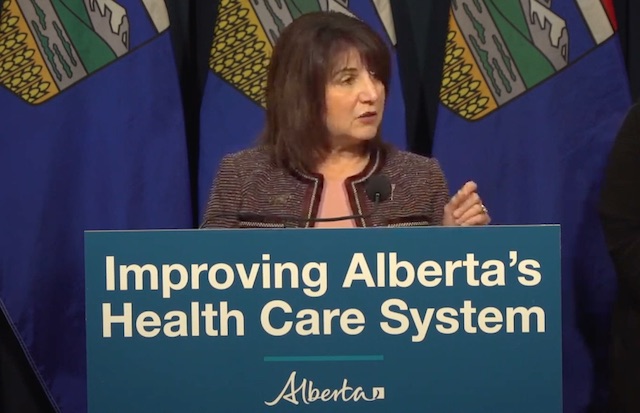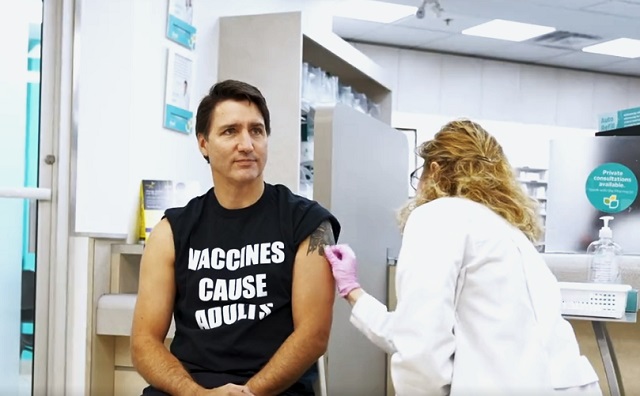Alberta
Calling on all Albertans to help shape health care

All Albertans are encouraged to participate in an online survey on the refocusing of Alberta’s health care system.
All Albertans are encouraged to participate in an online survey on the refocusing of Alberta’s health care system.
Alberta’s government is refocusing the health care system to improve health outcomes for Albertans and empower health care workers to deliver quality care across the province.
Engaging with health care workers and Albertans, and listening to the input of patients, families and caregivers remains a top priority for Alberta’s government throughout this refocusing process.
As a next step, Albertans are encouraged to share their thoughts through an online survey to gather deeper insights into the challenges, obstacles and successes experienced by both health care staff and Albertans within the current health care system.
“We’ve heard loud and clear that the issues in the health care system need to be addressed. Input from health care professionals, patients and every Albertan is vital in creating a refocused health care system that provides Albertans timely and accessible care. The ideas, solutions and first-hand experiences shared by those on the front lines are invaluable.”
To date, more than 8,000 doctors, nurses and health care professionals have participated in the initial round of engagement sessions. Between Nov. 9 and Nov. 17, Alberta’s government hosted five separate telephone town hall sessions with Alberta Health Services staff and mental health and addiction service providers. Front-line staff asked more than 140 questions, mostly around continuity of patient care during the transition and beyond. Alberta’s government is committed to ensuring a smooth transition and putting systems in place to help support front-line service delivery throughout the refocusing.
“Refocusing Alberta’s health care means a greater focus on mental health and addiction. We believe that every Albertan deserves an opportunity to pursue recovery. The feedback of Albertans and our community partners will be critically important in making this possible.”
“As we refocus Alberta’s health care system, it is critically important that we speak directly with the individuals who care directly for Albertans. These town halls will help us stay focused on our goal: to move to a modern, more responsive and effective health care system.”
More information sessions and town halls, both in person and online, will be announced in the coming weeks and months.
Quick facts
- Five town halls were held: one on Nov. 9, two on Nov. 14, one on Nov. 15 and another on Nov. 17.
- Three were available to all Alberta Health Services staff, while two were specific for mental health and addiction-focused staff and community partners.
- There were approximately 8,330 participants.
- Recordings of the town halls are available online.
Related information
Alberta
CPP another example of Albertans’ outsized contribution to Canada

From the Fraser Institute
By Tegan Hill
Amid the economic uncertainty fuelled by Trump’s trade war, its perhaps more important than ever to understand Alberta’s crucial role in the federation and its outsized contribution to programs such as the Canada Pension Plan (CPP).
From 1981 to 2022, Albertan’s net contribution to the CPP—meaning the amount Albertans paid into the program over and above what retirees in Alberta received in CPP payments—was $53.6 billion. In 2022 (the latest year of available data), Albertans’ net contribution to the CPP was $3.0 billion.
During that same period (1981 to 2022), British Columbia was the only other province where residents paid more into the CPP than retirees received in benefits—and Alberta’s contribution was six times greater than B.C.’s contribution. Put differently, residents in seven out of the nine provinces that participate in the CPP (Quebec has its own plan) receive more back in benefits than they contribute to the program.
Albertans pay an outsized contribution to federal and national programs, including the CPP because of the province’s relatively high rates of employment, higher average incomes and younger population (i.e. more workers pay into the CPP and less retirees take from it).
Put simply, Albertan workers have been helping fund the retirement of Canadians from coast to coast for decades, and without Alberta, the CPP would look much different.
How different?
If Alberta withdrew from the CPP and established its own standalone provincial pension plan, Alberta workers would receive the same retirement benefits but at a lower cost (i.e. lower CPP contribution rate deducted from our paycheques) than other Canadians, while the contribution rate—essentially the CPP tax rate—to fund the program would likely need to increase for the rest of the country to maintain the same benefits.
And given current demographic projections, immigration patterns and Alberta’s long history of leading the provinces in economic growth, Albertan workers will likely continue to pay more into the CPP than Albertan retirees get back from it.
Therefore, considering Alberta’s crucial role in national programs, the next federal government—whoever that may be—should undo and prevent policies that negatively impact the province and Albertans ability to contribute to Canada. Think of Bill C-69 (which imposes complex, uncertain and onerous review requirements on major energy projects), Bill C-48 (which bans large oil tankers off B.C.’s northern coast and limits access to Asian markets), an arbitrary cap on oil and gas emissions, numerous other “net-zero” targets, and so on.
Canada faces serious economic challenges, including a trade war with the United States. In times like this, it’s important to remember Alberta’s crucial role in the federation and the outsized contributions of Alberta workers to the wellbeing of Canadians across the country.
Alberta
Made in Alberta! Province makes it easier to support local products with Buy Local program

Show your Alberta side. Buy Local. |
When the going gets tough, Albertans stick together. That’s why Alberta’s government is launching a new campaign to benefit hard-working Albertans.
Global uncertainty is threatening the livelihoods of hard-working Alberta farmers, ranchers, processors and their families. The ‘Buy Local’ campaign, recently launched by Alberta’s government, encourages consumers to eat, drink and buy local to show our unified support for the province’s agriculture and food industry.
The government’s ‘Buy Local’ campaign encourages consumers to buy products from Alberta’s hard-working farmers, ranchers and food processors that produce safe, nutritious food for Albertans, Canadians and the world.
“It’s time to let these hard-working Albertans know we have their back. Now, more than ever, we need to shop local and buy made-in-Alberta products. The next time you are grocery shopping or go out for dinner or a drink with your friends or family, support local to demonstrate your Alberta pride. We are pleased tariffs don’t impact the ag industry right now and will keep advocating for our ag industry.”
Alberta’s government supports consumer choice. We are providing tools to help folks easily identify Alberta- and Canadian-made foods and products. Choosing local products keeps Albertans’ hard-earned dollars in our province. Whether it is farm-fresh vegetables, potatoes, honey, craft beer, frozen food or our world-renowned beef, Alberta has an abundance of fresh foods produced right on our doorstep.
Quick facts
- This summer, Albertans can support local at more than 150 farmers’ markets across the province and meet the folks who make, bake and grow our food.
- In March 2023, the Alberta government launched the ‘Made in Alberta’ voluntary food and beverage labelling program to support local agriculture and food sectors.
- Through direct connections with processors, the program has created the momentum to continue expanding consumer awareness about the ‘Made in Alberta’ label to help shoppers quickly identify foods and beverages produced in our province.
- Made in Alberta product catalogue website
Related information
-

 Energy2 days ago
Energy2 days ago‘War On Coal Is Finally Over’: Energy Experts Say Trump Admin’s Deregulation Agenda Could Fuel Coal’s ‘Revival’
-

 COVID-192 days ago
COVID-192 days agoThe Pandemic Justice Phase Begins as Criminal Investigations Commence
-

 Economy1 day ago
Economy1 day agoThe Net-Zero Dream Is Unravelling And The Consequences Are Global
-

 2025 Federal Election2 days ago
2025 Federal Election2 days agoBefore the Vote: Ask Who’s Defending Our Health
-

 2025 Federal Election1 day ago
2025 Federal Election1 day agoHomebuilding in Canada stalls despite population explosion
-

 2025 Federal Election2 days ago
2025 Federal Election2 days agoThe “Hardhat Vote” Has Embraced Pierre Poilievre
-

 2025 Federal Election14 hours ago
2025 Federal Election14 hours agoCarney’s Fiscal Fantasy: When the Economist Becomes More Dangerous Than the Drama Teacher
-

 Addictions1 day ago
Addictions1 day agoAddiction experts demand witnessed dosing guidelines after pharmacy scam exposed





